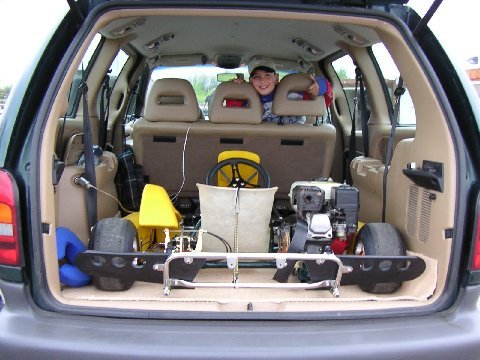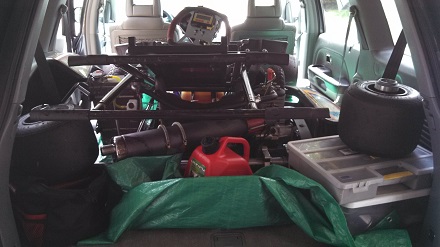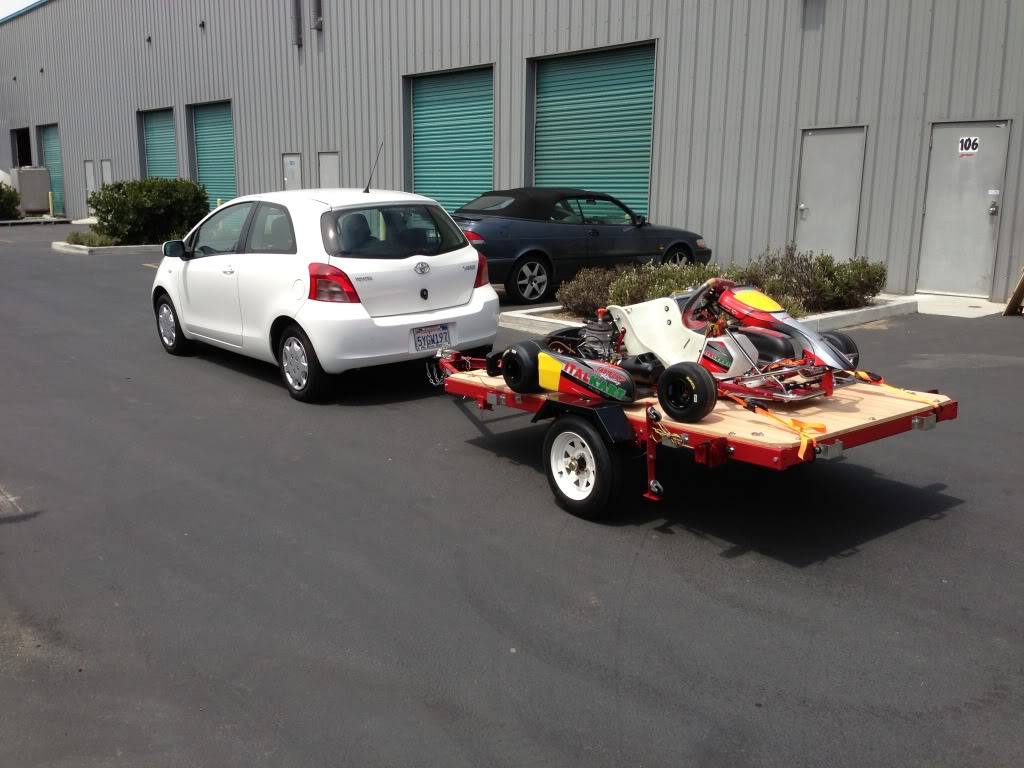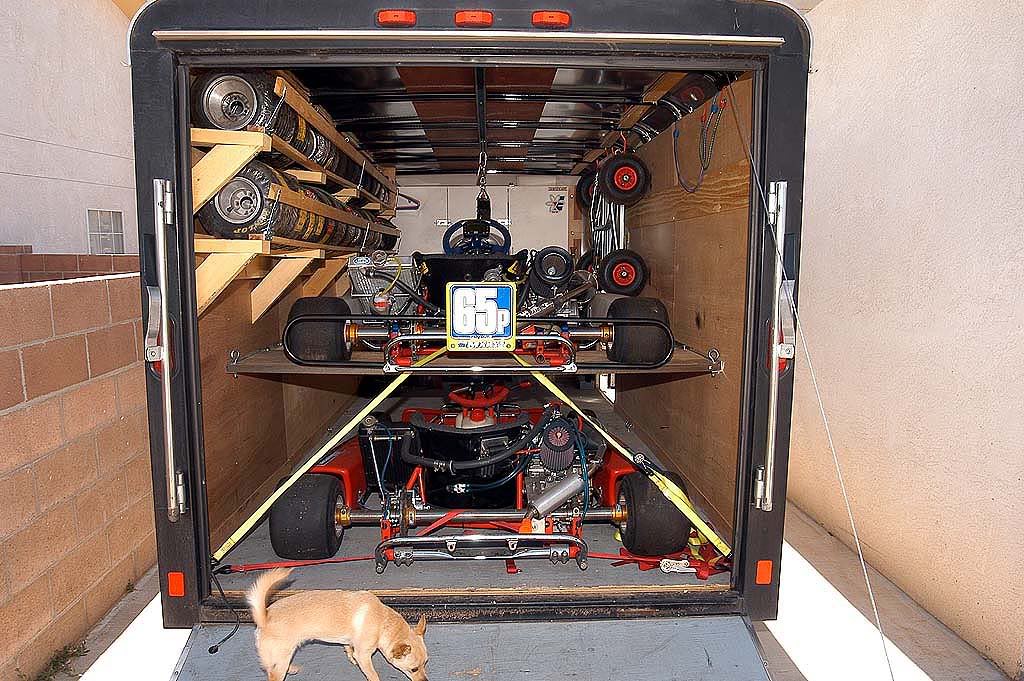In addition to your race kart and safety equipment, you also need to think about how you will be getting this to/from the track(s) and what you’ll need to prepare and tune your kart when you are there.
Transportation
There are ma ny options. The main thing to remember is that it does not have to be costly/complicated when you start in the sport. Karts can fit in the back of a minivan or small pickup truck if you have one of those already, or you can haul it on a small trailer attached to the back of your car. Most people starting in karting begin that way.
ny options. The main thing to remember is that it does not have to be costly/complicated when you start in the sport. Karts can fit in the back of a minivan or small pickup truck if you have one of those already, or you can haul it on a small trailer attached to the back of your car. Most people starting in karting begin that way.
In time, you may want to invest in a larger enclosed trailer. This is something you may have to look into if karting is a family activity or becomes a group activity and you have more than one kart to bring to/from the track. There may also be opportunities to share transportation related costs. For instance, I race as part of a small racing team with a couple of friends and we bought an enclosed trailer that contains our racing karts and equipment. We do not have to unpack when we get home, our stuff remains in the trailer. We shared the cost of that trailer and the operating costs of getting it to the track(s). You should also check with your local club, perhaps they are aware of existing teams that may have extra space and you could arrange something with them.



Tools
One does not need a lot of tools to get started. Typically, people will start with the basics and may build up their toolset progressively. Here’s the minimum one will need :
- A kart stand – this is a must have, you will use this to bring your kart from the paddock to the track and to make it easier to work on the kart when you are making adjustments in the paddock.
- A portable shelter – Popup shelter will protect you from the sun when you work on your kart in the paddock on a hot sunny day or from the rain (yes, we race karts in the rain, there is nothing like it to sharpen one’s driving skills). If you join a racing group, the cost of this item is shared by the group.
- A basic toolkit
- A small toolbox
- A couple of hammers (normal and rubber)
- A ratchet set – it does not need to be very big/expensive, you’ll use a few sockets repeatedly

- A wrench set
- An Allen key set
- Pliers (long nose, cutter and vice grip)
- A C-clip plier
- A chain breaker (size depends on the type of chain you’ll use, either #35 or #219)
- Screw drivers
- A tape measure
- a magnetic bowl to put your loose bolts in when you undo things in the paddock, it will save you from looking for bolts in the grass/gravel.
- Very handy but not a must have:
- a battery operated impact wrench (it speeds things up significantly when you have a number of bolts to deal with)
- a battery operated drill and a set of drill bits – you can also borrow from a fellow racer if you don’t have one.
- Gears & Sprockets
- One of the things you will change on your kart when you go to a different track or the track changes configuration is your kart’s gearing. You should therefore have a few different sprockets and clutch gears in your racing stuff (the clutch gear, a.k.a clutch “driver” model will vary depending on the type of clutch you use).
- For tire related operations, you’ll need
- A tire bead breaker – not needed very often and can likely be borrowed from other racers at the track to start with, this will help you change a tire from a rim
- A good air pressure gauge – a must have. You want something that is fairly precise as tire pressure is one of the main tuning item on your kart
- A soft tape measure – to measure the circumference your your rear tires
- A source of air pressure to inflate tires – you can use a bicycle air pump if you want, however this will not be sufficient if/when you change a tire at the track and need to pop the tire bead in place. There are usually other racers or dealers in the paddock who have air compressors and will be willing to let others use it for the simple cost of a friendly chat.
- Liquids
- A gas container and funnel
- An container to collect used oil so you can recycle it appropriately
- Lubricants for your axle bearings and chain
- Rags – a clean kart is a fast kart!
- A fire extinguisher (a required safety equipment in the paddock)
- A first aid kit
